LENS Colloquium marks a turning point in the terms of engagement between European scientists and policy makers
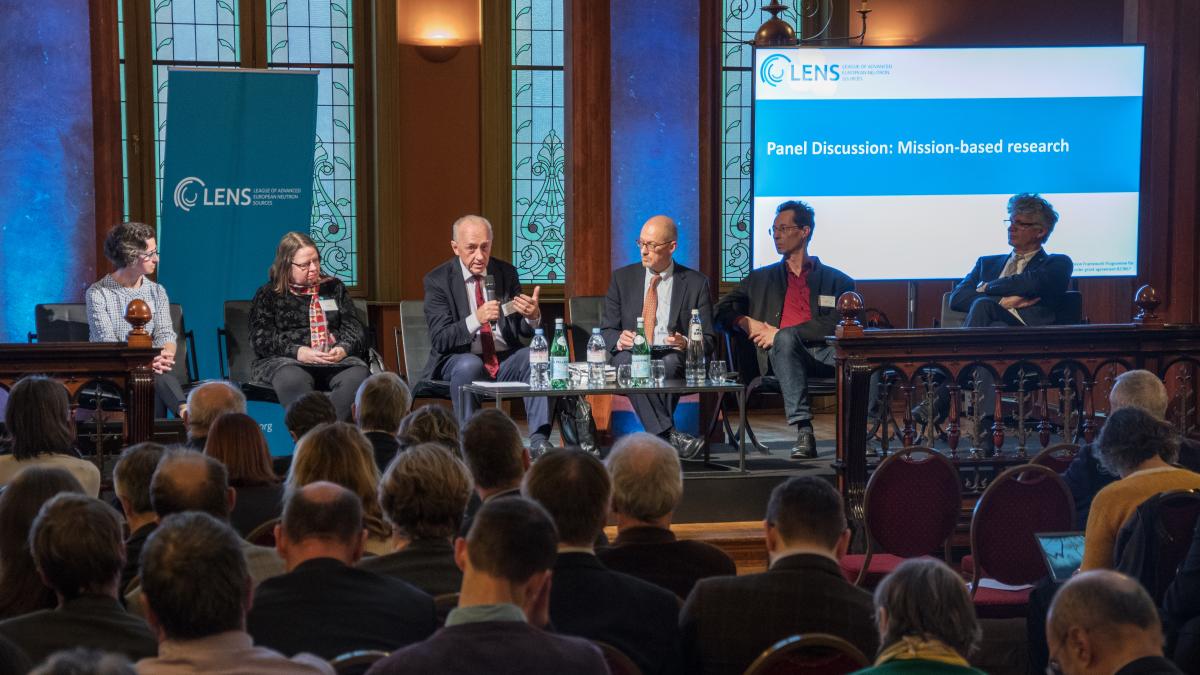
BRUSSELS—The League of advanced European Neutron Sources (LENS) held a science and policy colloquium here on Tuesday, February 11, focused on the theme How neutrons contribute to mission-based research. The meeting was held in the magnificent surroundings of the Bibliothèque Solvay in Brussels’s Parc Léopold and brought together members of Europe’s neutron science community, several European Commission representatives, and representatives from the League of European Accelerator-based Photon Sources (LEAPS)—a consortium of analytical facilities allied with LENS.
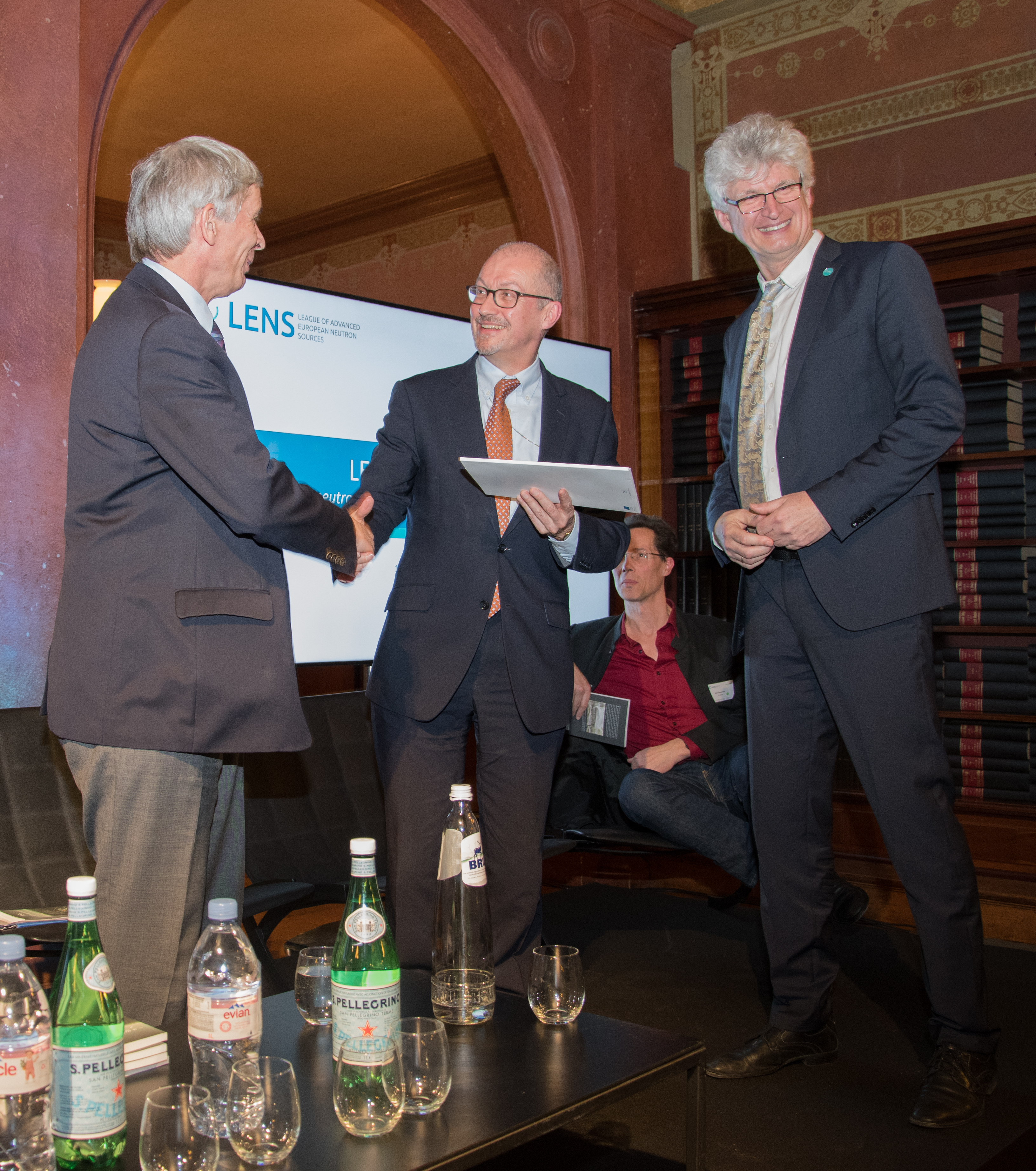 |
| The European Commission’s Adam Tyson (c) receives the LENS Green Deal Position Paper from LENS Vice-Chair Robert McGreevy (l) and Chair Helmut Schober (r) at the LENS Colloquium, 11 February 2020. PHOTO: Lenka Petková/ESS |
The LENS Colloquium was sponsored by the Horizon 2020 project BrightnESS², led by the European Spallation Source (ESS), and ESS Director General John Womersley opened the proceedings by highlighting the historical significance of the location. The momentous 5th Solvay Conference on Electrons and Photonswas held in a nearby building in the park some 93 years ago, and it is remembered as one of the most famous meetings in the history of physics. Gathered to establish the foundations of quantum physics, 17 of the 29 attendees went on to win Nobel Prizes for their work.
“While I don’t think we are likely to match that ratio in the wake of our neutrons and photons colloquium of 2020, I do think our presence here this afternoon marks a notable turning point for our community,” said Womersley. “There is a significant evolutionary change underway for both neutron science in Europe as well as in how the European Union views the role of research infrastructures.”
Horizon Europe: Accelerating the application of new knowledge
The head of the research and industrial infrastructures unit in the European Commission’s directorate-general for research and innovation is Adam Tyson, and he followed Womersley with a direct message to the leadership of both LENS and LEAPS.
“It is really fantastic and important that LENS and LEAPS have had this meeting earlier today,” said Tyson, referring to a first-of-its-kind strategic coordination meeting between the two umbrella organisations that collectively represent 25 facilities serving some 35,000 scientific users. “Out in the field, a neutron source and a light source look very different, but from where I stand they don’t. You must think about how to provide integrated services that focus on a mission. None of this means that there should be less emphasis on creating new knowledge—this is an important goal of Horizon Europe—but it gives direction to that knowledge, shortening the lag between new knowledge and its application.”
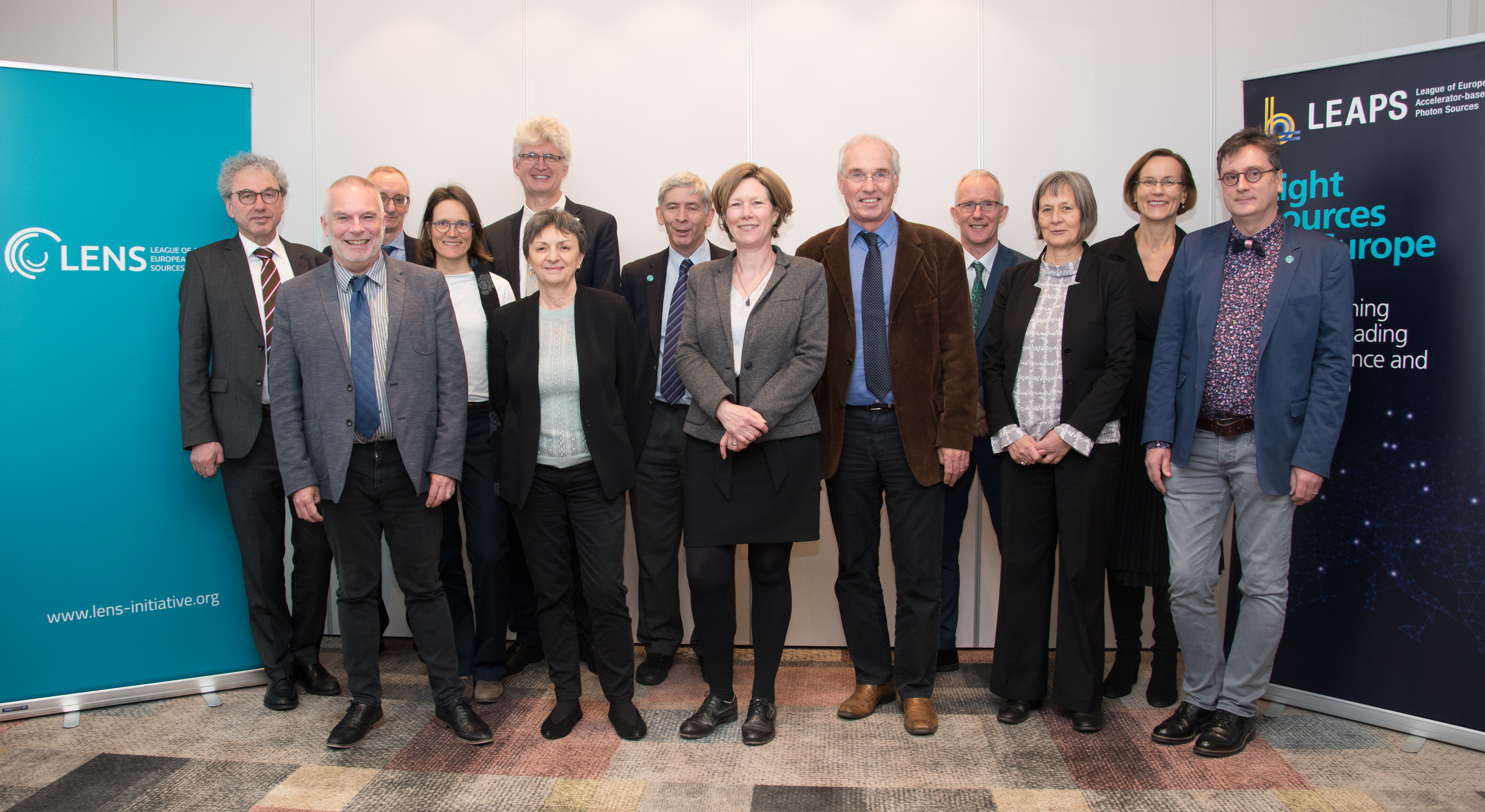
The leadership of LENS and LEAPS met February 11 to discuss a strategic collaboration. PHOTO: Lenka Petková/ESS
Tyson is referring to the Commission’s 9th Framework Programme, Horizon Europe, which proposes to dedicate nearly €100 billion toward the achievement of five soon-to-be-defined missions in the areas of cancer, adaptation to climate change, oceans, seas and inland waterways, climate-neutral and smart cities, and soil health and food. How Europe’s research infrastructures can best position themselves to contribute to these missions was the underlying motivation for the colloquium, which served to highlight the ways in which this was already being done and those areas where adaptation would be necessary.
The chair of LENS, Helmut Schober, who is director of the Institut Laue-Langevin (ILL), and Caterina Biscari, the chair of LEAPS and director of Spain’s ALBA Synchrotron, followed Tyson on the programme and made it clear that an important alliance between the two organisations was taking shape. “It would be great,” said Schober, “if we can look back at this as a step change in 2020 where we successfully reinvented ourselves.”
Outcomes of mission-based research with neutrons: health, energy and food production
Biscari gave a thorough introduction to LEAPS and highlighted where LENS and LEAPS facilities had long been cooperating both scientifically and otherwise, including in the increasingly critical area of data processing and analysis. Schober then set the stage for the remainder of the colloquium by moving quickly into the science of neutrons, highlighting recent research results from ILL that herald great benefits for society.
What followed into the early evening was a convincing display of the fulfilment of the “science for society” mantra that is central to the mission of many of Europe’s major science infrastructures.
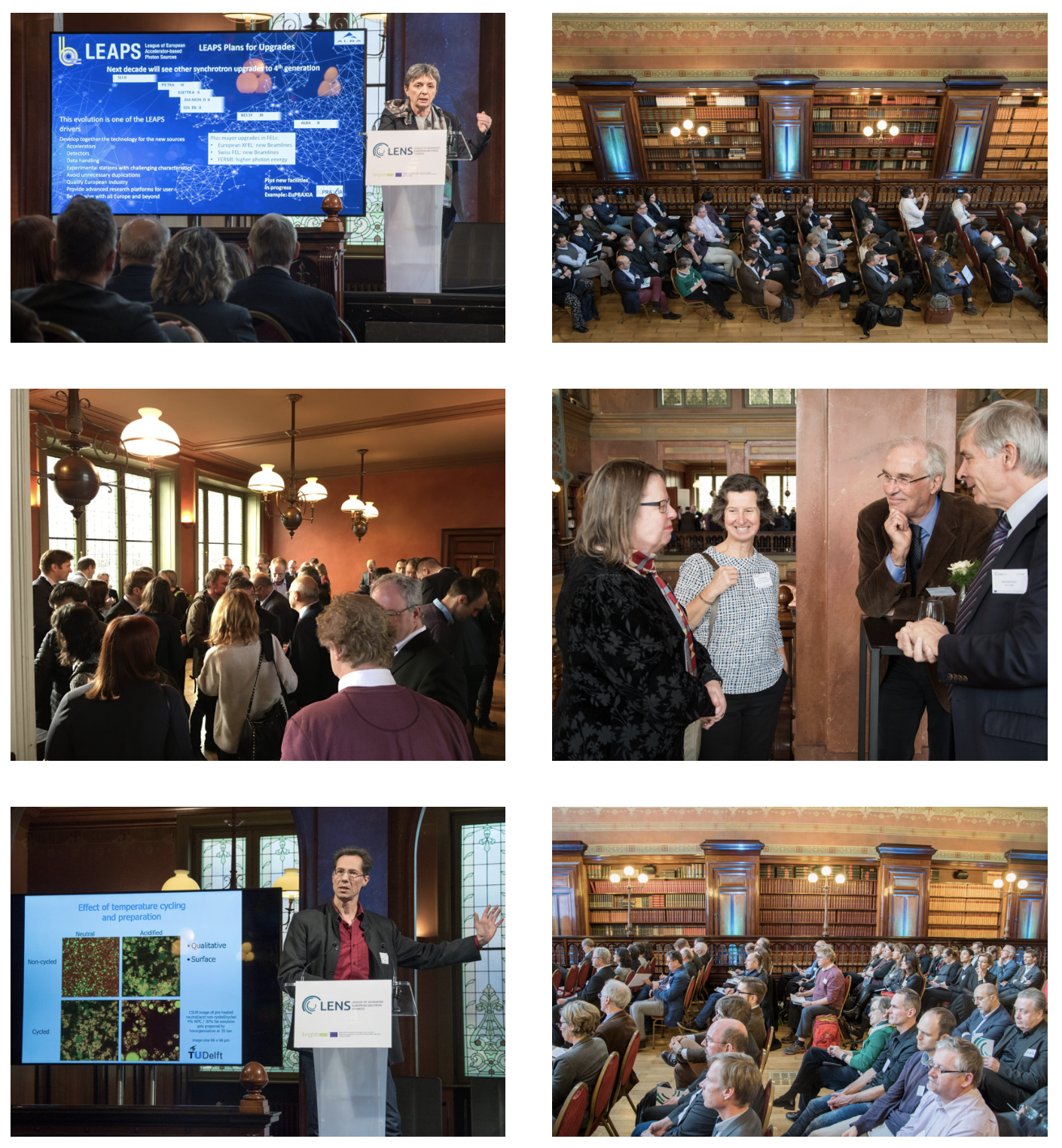
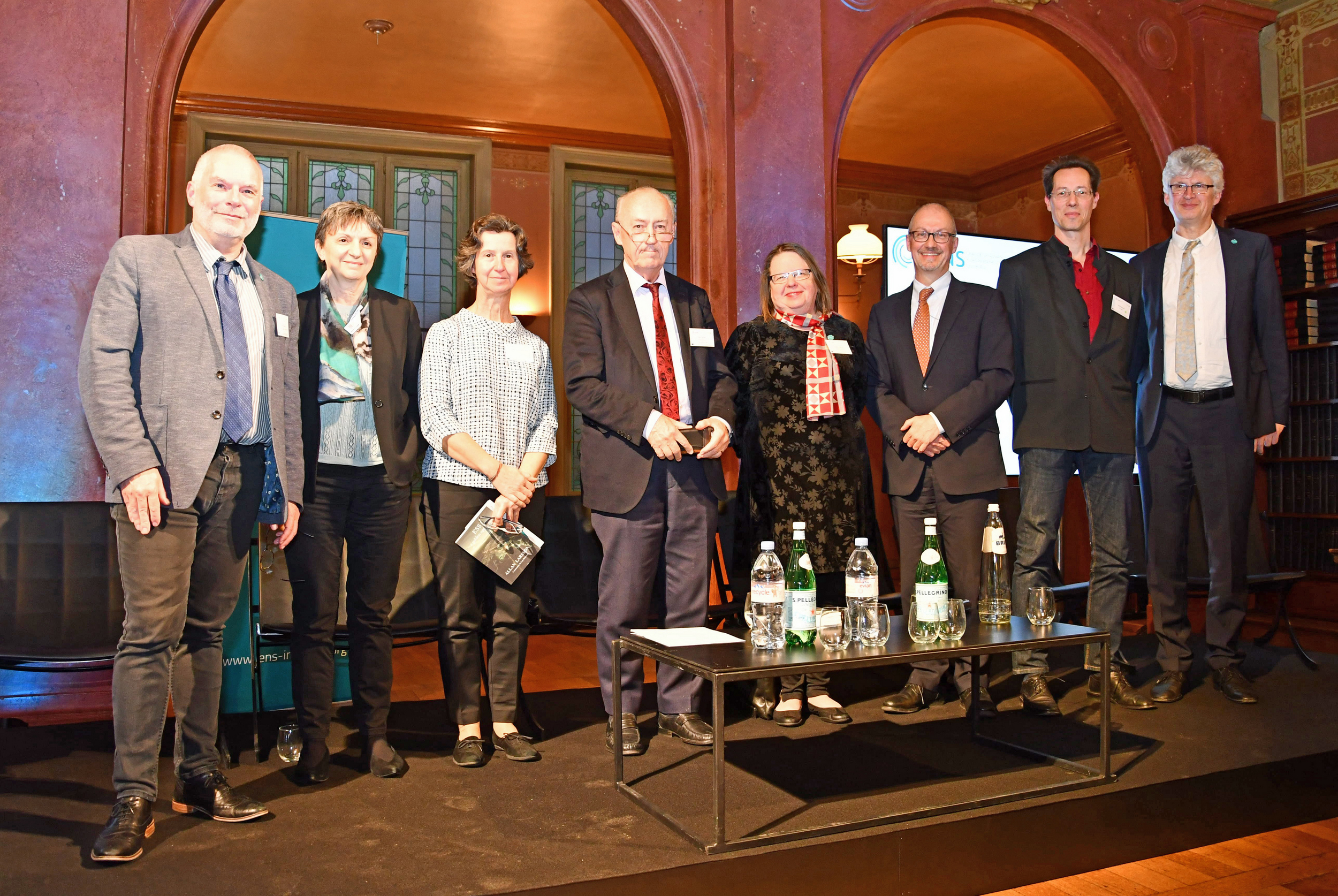
From left, John Womersley (ESS), Caterina Biscari (LEAPS, ALBA), Maria Paula M. Marques (Univ. of Coimbra), Allan Larsson, Kristina Edström (Univ. of Uppsala, BATTERY 2030+), Adam Tyson (DG-RTD, European Commission), Wim Bouwman (TU Delft) and Helmut Schober (LENS, ILL). PHOTO: Lenka Petková/ESS
Schober reviewed recent advances that will impact quantum computing (“the neutron can watch the quantum computer computing!”) and health research with neutrons that has advanced the understanding and treatment of Alzheimer’s, diabetes, AIDS and cancer. He then yielded the floor to Kristina Edström, a chemist from Uppsala University who has been making waves recently as project coordinator for the BATTERY 2030+ consortium, which aims to revolutionise the role batteries will play in our society over the next decade and beyond.
The most recent Nobel in chemistry recognised some of Edström’s predecessors and colleagues for the discoveries that led to lithium-ion battery technology, and that spotlight has settled on what is next for batteries. It is clear that both the EU and European industry intend to invest heavily in developing new science to advance the sustainability and impact of battery technology. Both LENS and LEAPS have recently published their input to the BATTERY 2030+ roadmap, which in its earliest stages relies on the capabilities of photon and neutron sources. Edström made it clear that “building better batteries” was the simplified concept at the heart of something much bigger:
“Our mission is to build a fossil-fuel-free society. Batteries themselves are not a mission but a key technology that will enable many different applications. We have the best scientists in Europe in our consortium and together we must find the golden nuggets and feed them to European industry. We must build not only an ecosystem with industry, but with the tools we have: neutrons and photons.”
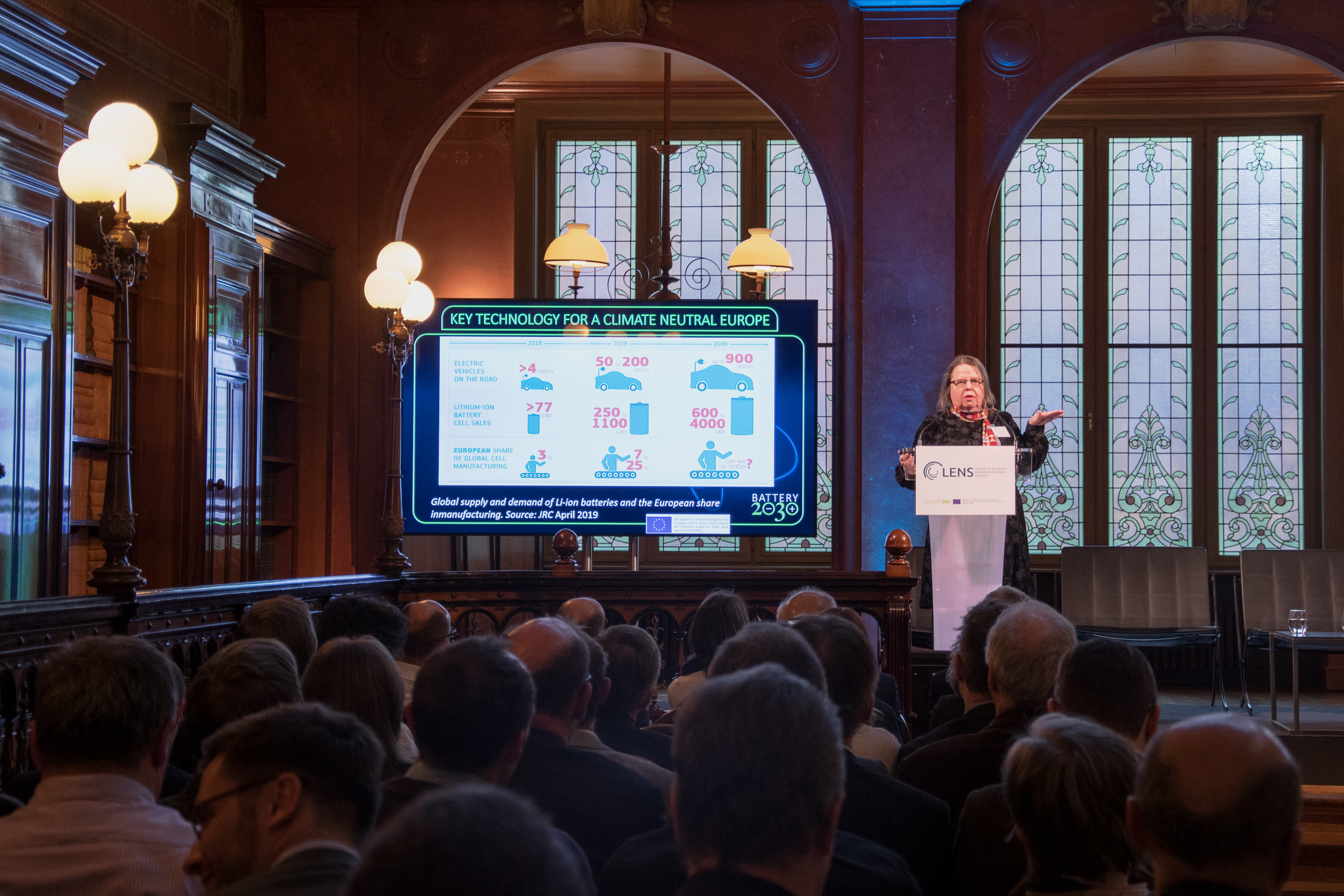
Kristina Edström of Uppsala University, coordinator of BATTERY 2030+. PHOTO: Lenka Petková/ESS
Following Edström were Maria Paula M. Marques and Wim Bouwman, two neutron science specialists who are engaged in mission-based research on cancer drugs and food production, respectively.
Marques is a researcher from Portugal’s University of Coimbra and recipient of last year’s ISIS Neutron & Muon Source Society Impact Award for research with neutrons. Her talk featured the fundamental research that has led to the discovery of new metal-based anti-cancer agents based on experiments she performed at the UK’s ISIS in 2017. The research provides the basis for new treatments that can reduce the toxicity of cancer therapy while enhancing the immune system’s ability to fight the disease.
Bouwman, who works out of the Technical University of Delft, is a neutron scientist who has long been studying the optimisation of food processing, including the development of sustainable ingredients for food production. Noting that food production accounts for 20% of the carbon dioxide contributing to climate change, Bouwman underscored the importance of establishing a scientific basis for new processes and ingredients, including viable meat substitutes.
Leveraging European investment
The colloquium closed with a short panel discussion that featured the addition of Sweden’s former finance minister, Allan Larsson. Larsson played an instrumental role in locating ESS in southern Sweden and currently serves on the EU’s mission board for Climate-Neutral and Smart Cities. The discussion broadened to the EU’s proposed European Green Deal, and Schober and LENS Vice-Chair Robert McGreevy, director of ISIS, took the opportunity to formally hand over the LENS Green Deal Position Paper to the Commission.
“For neutrons, European governments invest half a billion euros a year to build and operate their facilities,” said Schober during the panel discussion. “But with only a few million in the right place we can do something terrific—the leveraging power that comes from [the EC] should not be underestimated. With just a little stream of current, you can get Led Zeppelin out of your stereo.”

